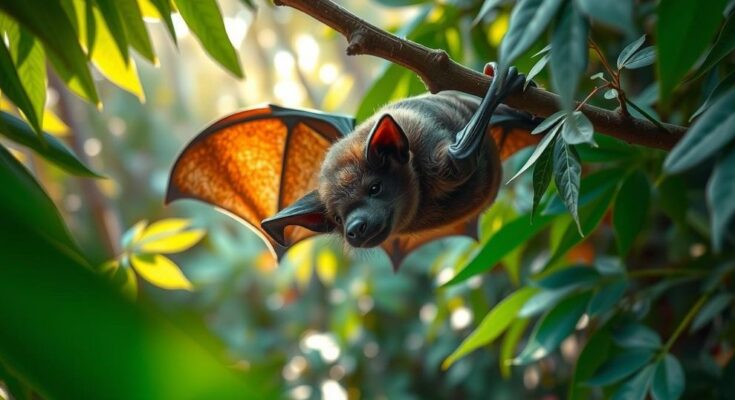Researchers have discovered a new bat coronavirus in Brazil sharing 72% of its genetic sequence with MERS-CoV. While the risk to humans is currently uncertain, plans for further experiments in Hong Kong aim to assess its potential for infection. The study underscores the genetic diversity of bat coronaviruses and emphasizes the need for ongoing surveillance to monitor public health risks.
A novel coronavirus has been identified in bats in Brazil, exhibiting significant genetic similarities to the MERS virus. Researchers from São Paulo and Ceará collaborated with colleagues from Hong Kong University to make this discovery. The newly identified virus shares approximately 72% of its genetic sequence with the MERS-CoV genome, specifically, having a 71.74% similarity in its spike protein, which is crucial for infecting host cells.
MERS-CoV, first discovered in Saudi Arabia in 2012, has resulted in more than 850 deaths and infections in over two dozen countries. Currently, it remains uncertain whether the new virus can infect humans. Researchers, however, detected parts of the virus’s spike protein that suggest a possible interaction with the receptor typically used by MERS-CoV. This uncertainty necessitates further experimentation.
High-biosecurity laboratories in Hong Kong are expected to conduct additional experiments this year in order to assess the risks posed to humans by the new virus. Continuous monitoring is deemed essential to identify circulating viruses and the potential transmission risks to humans and other animal species, as articulated by researcher Ricardo Durães-Carvalho.
In a study published in the Journal of Medical Virology, scientists evaluated 423 oral and rectal swabs from various bat species, identifying seven coronaviruses in five of the samples from bats in Fortaleza, Brazil. The novel coronavirus demonstrated substantial genetic similarity to strains found in humans and camels associated with MERS, and researchers also noted evidence of genomic recombination among the viruses.
The findings accentuate the high genetic diversity of coronaviruses found in bats, underscoring their role as reservoirs for emerging viruses. Dr. Durães-Carvalho emphasized the necessity for continuous epidemiological surveillance of bat populations to monitor public health risks related to coronaviruses. The researchers advocated for systematic and integrated analysis across multiple sectors to effectively monitor and potentially prevent future epidemics and pandemics.
The discovery of a new coronavirus in Brazilian bats highlights significant genetic similarities with MERS-CoV, raising concerns about potential risks to humans. Ongoing research and surveillance are vital as scientists work to understand the virus’s properties and the implications for public health. The findings reinforce the critical role bats serve as reservoirs for emerging viruses and the need for continuous monitoring and collaboration across health systems to address potential epidemic threats.
Original Source: www.independent.co.uk




